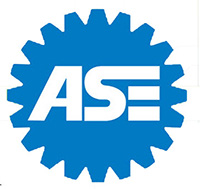

![]()

The National Institute for Automotive Service Excellence (ASE) recently introduced the Auto Maintenance and Light Repair (G1) certification category. According to the ASE, maintenance and light repair now account for approximately 70% of all service work.
The new G1 certification assesses your technical knowledge for performing maintenance and light repairs in the critical areas of:
Engine Systems - Verifying customer’s complaint and/or road testing the vehicle; determining the necessary action, utilizing ESMs, TSBs and Product Service Information.
Automatic Transmission/Transaxle - Road testing the vehicle to determine normal operation; retrieving and recording DTCs; determining fluid type, level and condition.
Manual Drivetrain and Axles - Inspecting, adjusting, replacing, and bleeding external hydraulic clutch slave/release cylinder, master cylinder, lines and hoses; cleaning and flushing hydraulic system; refilling procedures with proper fluids; road testing the vehicle to diagnose for drivetrain noises and vibration; inspecting, adjusting and replacing shafts, yokes, boots, universal/CV joints, wheel bearings, seals and hubs.
Suspension and Steering - Disarming the air bag (SRS) system; checking power steering fluid, identifying system type, determining fluid type and adjusting fluid levels; identifying front and rear suspension system noises, handling, ride height, and ride quality concerns; inspecting upper and lower control arms, bushings and shafts; inspecting and replacing front and rear stabilizer bars, bushings, brackets and links; inspecting rear suspension system coil springs, lateral links/arms and control arms.
Wheel Alignment - Identifying alignment related symptoms such as drift and pull; measuring thrust angle, front and rear wheel camber, caster, front and rear wheel toe and adjusting as needed; centering the steering wheel and calibrating the steering wheel angle sensor.
Wheels and Tires - Inspecting tire condition and identifying wear patterns; diagnosing wheel/tire vibrations, shimmy and noise concerns; balancing wheel and tire assemblies; identifying and testing tire pressure monitoring systems for operation and repairing or replacing as needed.
Brakes - Checking brake system operation for poor stopping, pulling, dragging, noises, high or low pedal height and pedal feel; removing and installing pads, calipers, and related attaching hardware; lubricating components; bleeding system; removing and replacing drums or rotors or machine rotors, using on-car or off-car method; identifying operation of the vacuum-type power booster or electro-hydraulic assist system; checking for system leaks and operation.
Electrical - Checking current flow in electrical circuits, voltages, grounds, and voltage drops in electrical circuits and interpreting readings; checking continuity and resistance in electrical circuits and components and interpreting readings; performing battery tests (load and capacitance); inspecting switches, connectors, and wire harnesses and repairing or replacing as needed; inspecting, replacing, or aiming headlights/bulbs and auxiliary lights and interior lamps.
Heating, Ventilation and Air Conditioning - Verifying HVAC operation [vent temperature, blower and condenser fan, compressor engagement, blend and/or set mode door operation]; visually checking A/C components, diagnosing leaks, and repairing as necessary; inspecting A/C condenser for air flow; checking drive belts for wear or tension and adjusting or replacing as needed.
The 90-minute Auto Maintenance and Light Repair certification test consists of 55 scored questions and 10 unscored research questions. The questions test skills you need to know to do the job; theoretical knowledge is not covered.
The Auto Maintenance and Light Repair certification is slightly different from other ASE certifications. If you pass the G1 exam and have at least one year of hands-on working experience in auto maintenance and light repair (half may be met by appropriate vocational training), you will achieve ASE certification in this area. However, like other ASE certifications, the credential will only be valid for five years.
Upon passing the G1 test, technicians receive a shoulder insignia, wall certificate and wallet card.
You can download a free copy of the G1 study guide, which identifies the topics that will be covered on the test, at www.ase.com.
Note: To ensure ASE certification results are communicated to Nissan properly, new technicians must enter their Virtual Academy ASE ID on the ASE web site.

